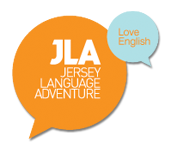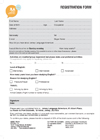Learn English with JLA | 21 Language Facts
Learning English in Jersey with JLA is a great way to start your adventure in language. Here are some interesting language facts to get you excited and motivated to learn a new language.
1) There are between 6000 and 7000 languages in the world – spoken by 7 billion people divided into 189 independent states.
2) There are about 225 indigenous languages in Europe – roughly 3% of the world’s total.
3) Most of the world’s languages are spoken in Asia and Africa.
4) At least half of the world’s population are bilingual or plurilingual, i.e. they speak two or more languages.
5) In their daily lives, Europeans increasingly come across foreign languages. There is a need to generate a greater interest in languages among European citizens.
6) Many languages have 50.000 words or more, but individual speakers normally know and use only a fraction of the total vocabulary: in everyday conversation people use the same few hundred words.
7) Languages are constantly in contact with each other and affect each other in many ways: English borrowed words and expressions from many other languages in the past, European languages are now borrowing many words from English.
8) In its first year, a baby utters a wide range of vocal sounds; at around one year, the first understandable words are uttered; at around three years, complex sentences are formed; at five years, a child possesses several thousand words.
9) The mother tongue is usually the language one knows best and uses most. But there can be ‘perfect bilinguals’ who speak two languages equally well. Normally, however, bilinguals display no perfect balance between their two languages.
10) Bilingualism brings with it many benefits: it makes the learning of additional languages easier, enhances the thinking process and fosters contacts with other people and their cultures.
11) Bilingualism and plurilingualism entail economic advantages, too: jobs are more easily available to those who speak several languages, and multilingual companies have a better competitive edge than monolingual ones.
12) Languages are related to each other like the members of a family. Most European languages belong to the large Indo-European family.
13) Most European languages belong to three broad groups: Germanic, Romance and Slavic.
14) The Germanic family of languages includes Danish, Norwegian, Swedish, Icelandic, German, Dutch, English and Yiddish, among others.
15) The Romance languages include Italian, French, Spanish, Portuguese and Romanian, among others.
16) The Slavic languages include Russian, Ukrainian, Belarusian, Polish, Czech, Slovak, Slovenian, Serbian, Croatian, Macedonian, Bulgarian and others.
17) Most European languages use the Latin alphabet. Some Slavic languages use the Cyrillic alphabet. Greek, Armenian, Georgian and Yiddish have their own alphabet.
18) Most countries in Europe have a number of regional or minority languages – some of these have obtained official status.
19) The non-European languages most widely used on European territory are Arabic, Chinese and Hindi, each with its own writing system.
20) Russia (148 million inhabitants) has by far the highest number of languages spoken on its territory: from 130 to 200 depending on the criteria.
21) Due to the influx of migrants and refugees, Europe has become largely multilingual. In London alone some 300 languages are spoken (Arabic, Turkish, Kurdish, Berber, Hindi, Punjabi, etc.).
This post is also available in: French
Contact JLA
Address
9 Court Drive,La Route de La Haule,
St Lawrence,
Jersey,
JE3 1LD
Telephone
Tel: +44 (0)1534 610153Mob: +44 (0)7797852814
Testimonials
Thank you all for this wonderful week ! I hope to return to Jersey soon ! Marion (17)




